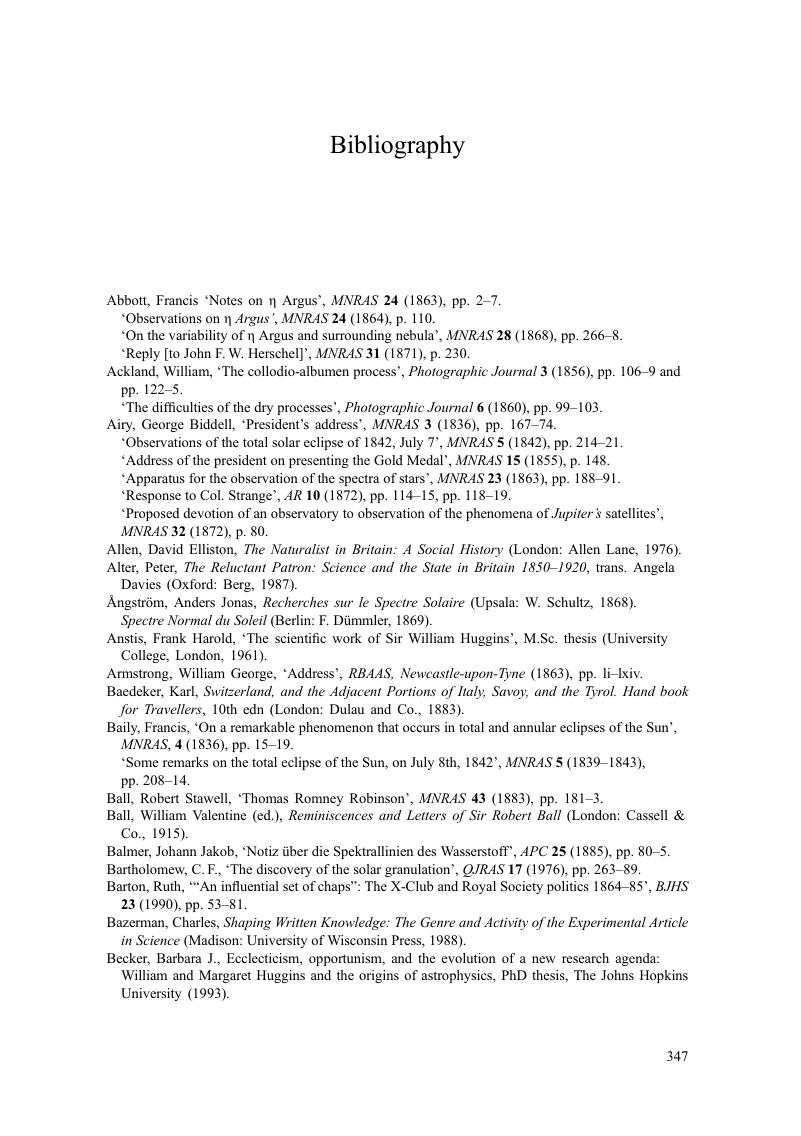Book contents
- Frontmatter
- Contents
- List of illustrations
- Acknowledgements
- List of abbreviations
- 1 Introduction
- 2 ‘The astronomer … must come to the chemist’
- 3 The young observer
- 4 ‘A sudden impulse …’
- 5 The riddle of the nebulae
- 6 Moving in the inner circle
- 7 Stellar motion along the line of sight
- 8 A new telescope
- 9 Solar observations
- 10 An able assistant
- 11 Photographing the solar corona
- 12 A scientific lady
- 13 Foes and allies
- 14 The new astronomy
- 15 ‘One true mistress’
- 16 Conclusion
- Appendix: ‘The new astronomy: A personal retrospect’
- Bibliography
- Index
- References
Bibliography
Published online by Cambridge University Press: 03 May 2011
- Frontmatter
- Contents
- List of illustrations
- Acknowledgements
- List of abbreviations
- 1 Introduction
- 2 ‘The astronomer … must come to the chemist’
- 3 The young observer
- 4 ‘A sudden impulse …’
- 5 The riddle of the nebulae
- 6 Moving in the inner circle
- 7 Stellar motion along the line of sight
- 8 A new telescope
- 9 Solar observations
- 10 An able assistant
- 11 Photographing the solar corona
- 12 A scientific lady
- 13 Foes and allies
- 14 The new astronomy
- 15 ‘One true mistress’
- 16 Conclusion
- Appendix: ‘The new astronomy: A personal retrospect’
- Bibliography
- Index
- References
Summary

- Type
- Chapter
- Information
- Unravelling StarlightWilliam and Margaret Huggins and the Rise of the New Astronomy, pp. 347 - 374Publisher: Cambridge University PressPrint publication year: 2011



